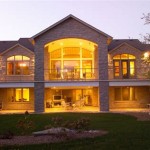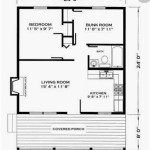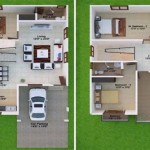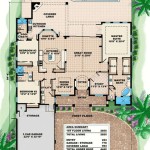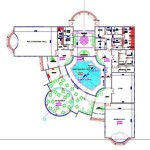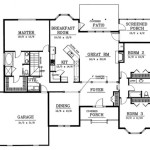```html
Small House Plans With Basement And Garage Designs
The convergence of affordability, efficient space utilization, and the desire for modern amenities has fueled a growing interest in small house plans that incorporate both a basement and a garage. These designs represent a practical solution for homeowners seeking to maximize their property's potential without sacrificing comfort or convenience. This article will explore the various aspects of small house plans with basements and garages, highlighting their benefits, design considerations, and common features.
Benefits of a Basement and Garage in a Small House Design
Integrating a basement and a garage into a small house design offers a multitude of advantages. A basement provides additional living space, storage capacity, or the potential for future expansion. It can be finished to create a recreation room, home office, guest suite, or dedicated storage area, effectively doubling the usable square footage of the house. The garage, often attached or detached, offers secure parking for vehicles, protection from the elements, and additional storage for tools, equipment, and outdoor gear. Together, these features enhance the functionality and value of the home.
One of the primary benefits is space optimization. In urban areas or locations with limited lot sizes, building vertically with a basement and incorporating a garage can significantly increase the usable space without expanding the building footprint. This approach allows homeowners to enjoy the benefits of a larger home without the higher associated land costs. Furthermore, a basement can provide a safe haven during severe weather events, offering protection from tornadoes or hurricanes.
Another significant advantage is the potential for increased property value. Homes with finished basements and attached garages are often more desirable to potential buyers, as these features add immediate value and convenience. The additional living space and secure parking are attractive selling points that can command a higher market price. The ability to customize the basement to meet specific needs also appeals to a broader range of buyers.
Key Design Considerations for Small House Plans
Designing a small house plan with a basement and a garage requires careful consideration of several factors. These include local building codes, site conditions, budget constraints, and the desired functionality of the spaces. Architects and designers must work closely with homeowners to create a plan that meets their specific needs and complies with all applicable regulations.
One of the first considerations is the foundation design. The type of foundation required will depend on the soil conditions, climate, and local building codes. Common types of foundations include poured concrete, concrete block, and insulated concrete forms (ICF). The foundation must be properly waterproofed and insulated to prevent moisture problems and energy loss. Drainage systems, such as perimeter drains and sump pumps, are essential for managing groundwater and preventing basement flooding.
Garage placement and access are also crucial design elements. An attached garage offers convenience and protection from the elements, allowing homeowners to enter the house directly from the garage without having to go outside. However, an attached garage can also impact the aesthetic appeal of the house and potentially reduce natural light in adjacent rooms. A detached garage, on the other hand, can be placed strategically on the property to maximize curb appeal and natural light. The driveway design should also be carefully considered to ensure easy access and adequate parking space.
Interior layout and space planning are essential for maximizing the functionality of a small house. Open floor plans that combine the living room, dining room, and kitchen can create a sense of spaciousness. Strategic use of natural light and proper ventilation can also enhance the comfort and livability of the home. The placement of stairs leading to the basement should be carefully considered to minimize wasted space and ensure easy access. Consideration should also be given to universal design principles to ensure accessibility for people of all ages and abilities.
Common Features and Options
Small house plans with basements and garages often incorporate a variety of features and options to enhance their functionality and appeal. These features can be customized to meet the specific needs and preferences of the homeowner.
Basement finishing options include a variety of flooring materials, wall treatments, and ceiling finishes. Popular flooring choices include carpet, tile, laminate, and epoxy coatings. Wall treatments can range from drywall and paint to wood paneling and stone veneer. Drop ceilings are often used to conceal ductwork and wiring, while exposed beam ceilings can create a more rustic aesthetic. Basement finishing can also include the addition of bathrooms, kitchens, and bedrooms, effectively creating a self-contained living space.
Garage options include attached or detached configurations, single-car or multi-car designs, and a variety of door styles and materials. Attached garages are typically accessed through an interior door, while detached garages require an exterior entrance. Garage door options include sectional doors, roll-up doors, and swing-out doors. Common garage materials include wood, steel, and aluminum. Additional garage features can include built-in storage cabinets, workbenches, and electrical outlets for power tools.
Energy efficiency is a critical consideration in modern home design. Small house plans with basements and garages can incorporate a variety of energy-efficient features to reduce energy consumption and lower utility bills. These features include high-performance windows and doors, improved insulation, energy-efficient appliances, and renewable energy systems. Geothermal heating and cooling systems can utilize the stable temperature of the earth to provide efficient heating and cooling. Solar panels can generate electricity, reducing reliance on the grid. Proper sealing and weatherstripping can prevent air leaks and improve energy efficiency.
Smart home technology can also be integrated into small house plans to enhance convenience, security, and energy efficiency. Smart thermostats can automatically adjust the temperature based on occupancy and outside weather conditions. Smart lighting systems can be controlled remotely, allowing homeowners to turn lights on and off from their smartphones. Smart security systems can provide intrusion detection, video surveillance, and remote monitoring. Smart garage door openers can be controlled remotely, allowing homeowners to open and close the garage door from their smartphones.
Accessibility features can be incorporated into small house plans to make them more accessible to people of all ages and abilities. These features can include ramps, wider doorways, grab bars, and roll-in showers. Universal design principles can be applied throughout the house to create a more comfortable and accessible living environment.
Landscaping can enhance the aesthetic appeal of a small house and improve its connection to the surrounding environment. Native plants can be used to create a low-maintenance landscape that conserves water and provides habitat for wildlife. Outdoor living spaces, such as patios and decks, can extend the living area of the house and provide opportunities for outdoor recreation. Proper drainage can prevent water damage to the foundation and landscaping.
Consideration for natural lighting is paramount in any house design, but even more so in small houses. Large windows, skylights, and light wells can bring natural light into the basement and other areas of the house. Proper orientation of the house can maximize the amount of sunlight that enters the windows. Interior design choices, such as light-colored walls and reflective surfaces, can also help to maximize natural light.
Ventilation is also crucial in a small house, especially in the basement. Proper ventilation can prevent moisture buildup and improve air quality. Dehumidifiers can be used to remove excess moisture from the air. Radon mitigation systems may be necessary in areas with high radon levels. Exhaust fans in bathrooms and kitchens can remove odors and moisture.
In summary, small house plans with basements and garages offer a practical and efficient solution for homeowners seeking to maximize their property's potential. By carefully considering the design factors and available options, it is possible to create a comfortable, functional, and valuable home that meets the specific needs of the homeowner.
```
Drive Under House Plans With Basement Garage The Designers

Drive Under House Plans With Basement Garage The Designers

Hillside House Plans With Garages Underneath Houseplans Blog Com

House Plans With Basements And Lower Living Areas

Pin Page

Small Cottage Plan With Walkout Basement Floor

Drive Under House Plans Small Modern Raised Hillside

Drive Under House Plans With Basement Garage The Designers

Simple House Floor Plans 3 Bedroom 1 Story With Basement Home Design

Small Cottage Plan With Walkout Basement Floor

